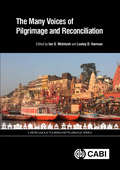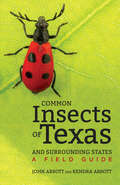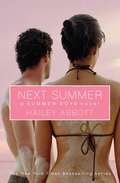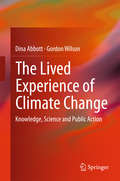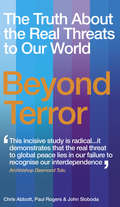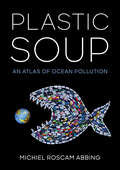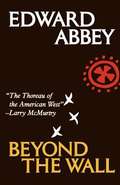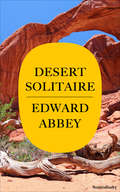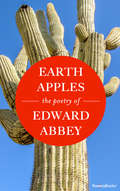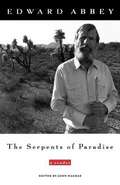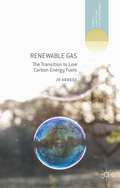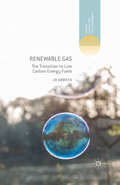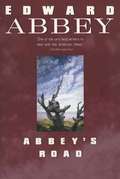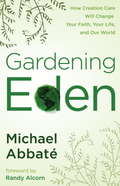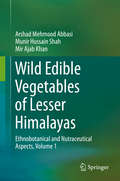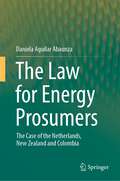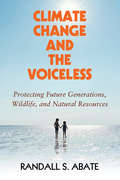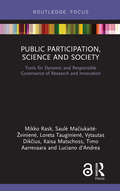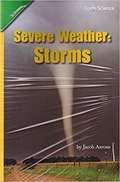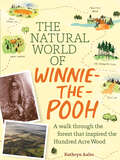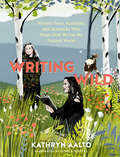- Table View
- List View
Many Voices of Pilgrimage and Reconciliation, The (CABI Religious Tourism and Pilgrimage Series)
by Tahar Abbou Lucinda Carspecken John Hornblow Jenny Boyack Sonika Jain Nanna Natalia Jørgensen Steven Muir Zülfükar Özdogan Cindy Pavlinac E. Moore Quinn Mari-Johanna Rahkala-Simberg Varada Sambus Patricia A. Sayre Daniel J. Simons Chadwick Co Su Sara TerreaultReviewing peace and reconciliation, secular pilgrimages, and international perspectives on sacred journeys, this book offers the reader an opportunity to encounter multiple voices and viewpoints on one of the most ancient practices of humankind. With an estimated third of all international travellers now undertaking journeys anticipating an aspect of transformation (the hallmark of pilgrimage), this book includes both spiritual and non-spiritual voyages, such as journeys of self-therapy, mindfulness and personal growth. It also: - Provides a multidisciplinary perspective, covering themes such as gender, human rights, equality, the environment, peace, history, literature, and politics - Reflects the rich diversity and multiple meanings of pilgrimage through an international writer team spanning four continents - Includes case studies of pilgrimage in action from around the world An innovative and engaging addition to the pilgrimage literature, this book provides an important resource for researchers of religious tourism and related subjects.
Common Insects of Texas and Surrounding States: A Field Guide
by John C. Abbott Kendra AbbottA comprehensive field guide to Texas&’s insects, featuring 1,300 species and over 2,700 photographs. Thanks to its size and geographic position, Texas is home to nearly 30,000 species of insects, likely making its insect population the most diverse in the nation. Ranging from eastern and western to temperate and tropical species, this vast array of insects can be difficult to identify. In Common Insects of Texas and Surrounding States, John and Kendra Abbott have created the state&’s most comprehensive field guide to help readers recognize and understand these fascinating creatures. Containing 1,300 species and more than 2,700 photographs, this guide offers a wealth of information about the characteristics and behaviors of Texas&’s insects. Each chapter introduces an order with a discussion of general natural history and a description of other qualities helpful in distinguishing its various species, while every species&’ entry provides a state map showing where it is most likely to be found, a key displaying its seasonal distribution, information about its habitat, and corresponding photos. Featuring colored tabs for quick reference, a glossary, and information about other arthropods, this guide is the perfect companion for anyone wanting to identify and learn more about the many insects of Texas.&“Expertly written and beautifully illustrated, this exceptional book will be of interest to both professional and beginning naturalists.&” —Edward O. Wilson, University Research Professor Emeritus, Harvard University
Common Insects of Texas and Surrounding States: A Field Guide
by John C. Abbott Kendra AbbottA comprehensive field guide to Texas&’s insects, featuring 1,300 species and over 2,700 photographs. Thanks to its size and geographic position, Texas is home to nearly 30,000 species of insects, likely making its insect population the most diverse in the nation. Ranging from eastern and western to temperate and tropical species, this vast array of insects can be difficult to identify. In Common Insects of Texas and Surrounding States, John and Kendra Abbott have created the state&’s most comprehensive field guide to help readers recognize and understand these fascinating creatures. Containing 1,300 species and more than 2,700 photographs, this guide offers a wealth of information about the characteristics and behaviors of Texas&’s insects. Each chapter introduces an order with a discussion of general natural history and a description of other qualities helpful in distinguishing its various species, while every species&’ entry provides a state map showing where it is most likely to be found, a key displaying its seasonal distribution, information about its habitat, and corresponding photos. Featuring colored tabs for quick reference, a glossary, and information about other arthropods, this guide is the perfect companion for anyone wanting to identify and learn more about the many insects of Texas.&“Expertly written and beautifully illustrated, this exceptional book will be of interest to both professional and beginning naturalists.&” —Edward O. Wilson, University Research Professor Emeritus, Harvard University
Next Summer (A Summer Boys Novel)
by Hailey AbbottAll the girls -- and SOME of the boys -- from the original "SUMMER BOYS" are back, and ready for more summer intrigue! Will soul mates Beth and George be able to maintain their long-distance love affair, even while another boy is catching Beth's eye? Will reformed bad girl Ella REALLY be able to suppress her wild ways? And will innocent Jamie rebound from last summer's heartache with a brand new summer boy? And, in the midst of all this boy drama, can the three cousins still remain as close as ever -- or will something tear them apart? Find out all this -- and much more -- in this sexy sequel.
The Lived Experience of Climate Change
by Dina Abbott Gordon WilsonThis book explores the idea that daily lived experiences of climate change are a crucial missing link in our knowledge that contrasts with scientific understandings of this global problem. It argues that both kinds of knowledge are limiting: the sciences by their disciplines and lived experiences by the boundaries of everyday lives. Therefore each group needs to engage the other in order to enrich and expand understanding of climate change and what to do about it. Complemented by a rich collection of examples and case studies, this book proposes a novel way of generating and analysing knowledge about climate change and how it may be used. The reader is introduced to new insights where the book: * Provides a framework that explains the variety of simultaneous, co-existing and often contradictory perspectives on climate change. * Reclaims everyday experiential knowledge as crucial for meeting global challenges such as climate change. * Overcomes the science-citizen dichotomy and leads to new ways of examining public engagement with science. Scientists are also human beings with lived experiences that filter their scientific findings into knowledge and actions. * Develops a 'public action theory of knowledge' as a tool for exploring how decisions on climate policy and intervention are reached and enacted. While scientists (physical and social) seek to explain climate change and its impacts, millions of people throughout the world experience it personally in their daily lives. The experience might be bad, as during extreme weather, engender hostility when governments attempt mitigation, and sometimes it is benign. This book seeks to understand the complex, often contradictory knowledge dynamics that inform the climate change debate, and is written clearly for a broad audience including lecturers, students, practitioners and activists, indeed anyone who wishes to gain further insight into this far-reaching issue.
Beyond Terror: The Truth About the Real Threats to Our World
by Chris Abbott John Sloboda Paul RogersIs international terrorism really the single greatest threat to world security?Since the 9/11 attacks, many Western governments assume terrorism to be the greatest threat we face. In response, their dangerous policies attempt to maintain control and keep the status quo by using overwhelming military force. This important book shows why this approach has been such a failure, and how it distracts us from other, much greater, threats of climate change, competition over resources, marginalisation of the majority of the world and global militarisation.Unless urgent, coordinated action is taken in the next 5-10 years on all these issues it will be almost imossible to avoid the earth becoming a highly unstable place by the middle years of this century. Beyond Terror offers an alternative path for politicians, journalists and concerned citizens alike.
Plastic Soup: An Atlas of Ocean Pollution
by Michiel Roscam AbbingPlastics have transformed every aspect of our lives. Yet the very properties that make them attractive—they are cheap to make, light, and durable—spell disaster when trash makes its way into the environment. Plastic Soup: An Atlas of Ocean Pollution is a beautifully-illustrated survey of the plastics clogging our seas, their impacts on wildlife and people around the world, and inspirational initiatives designed to tackle the problem. In Plastic Soup, Michiel Roscam Abbing of the Plastic Soup Foundation reveals the scope of the issue: plastic trash now lurks on every corner of the planet. With striking photography and graphics, Plastic Soup brings this challenge to brilliant life for readers. Yet it also sends a message of hope; although the scale of the problem is massive, so is the dedication of activists working to check it. Plastic Soup highlights a diverse array of projects to curb plastic waste and raise awareness, from plastic-free grocery stores to innovative laws and art installations. According to some estimates, if we continue on our current path, the oceans will contain more plastic than fish by the year 2050. Created to inform and inspire readers, Plastic Soup is a critical tool in the fight to reverse this trend.
Beyond the Wall: Essays from the Outside
by Edward AbbeyIn this wise and lyrical book about landscapes of the desert and the mind, Edward Abbey guides us beyond the wall of the city and asphalt belting of superhighways to special pockets of wilderness that stretch from the interior of Alaska to the dry lands of Mexico.
Desert Solitaire: A Season In The Wilderness
by Edward AbbeyThis memoir of life in the American desert by the author of The Monkey Wrench Gang is a nature writing classic on par with Rachel Carson&’s Silent Spring. In Desert Solitaire, Edward Abbey recounts his many escapades, adventures, and epiphanies as an Arches National Park ranger outside Moab, Utah. Brimming with arresting insights, impassioned arguments for wilderness conservation, and a raconteur&’s wit, it is one of Abbey&’s most critically acclaimed works. Through stories and philosophical musings, Abbey reflects on the condition of our remaining wilderness, the future of a civilization, and his own internal struggle with morality. As the world continues its rapid development, Abbey&’s cry to maintain the natural beauty of the West remains just as relevant today as when this book first appeared in 1968.
Down the River
by Edward AbbeyA curious look into the life of the Colorado river before the Glen Canyon Dam, as well as a collection of stories of life -- and sometimes death.
Earth Apples: The Poetry of Edward Abbey
by Edward AbbeyPoems about love and landscapes by the author of the classic Desert Solitaire, an &“environmentalist, nature writer, novelist and all-around iconoclast&” (The New York Times). While better known for his nature writing and his comic classic The Monkey Wrench Gang, Edward Abbey was also an enthusiastic creator of verse. The New York Times called his memoir Desert Solitaire &“deeply poetic&”—and now Earth Apples gives us his actual poetry, in Abbey&’s first and only collection. Whether writing about vast desert landscapes, New York City, or a love of bawdy women, Abbey's verse is eloquent, irreverent, and unapologetically passionate. The poems gathered here, published digitally for the first time, are culled from Abbey&’s journals and give an insightful and unique glance into the mind of this literary legend.
One Life at a Time, Please
by Edward AbbeyWarhorse, gadfly, storyteller, naturalist--there is no simple category to contain the vibrant prose voice of Edward Abbey. And this snappy collection of essays displays the author of "Desert Solitaire" and "The Monkey-Wrench Gang" at the height of his curmudgeonry.
The Serpents of Paradise
by Edward AbbeyThe selections gathered here are arranged chronologically by incident, not by date of publication, to offer Edward Abbey's life from the time he was the boy called Ned in Home, Pennsylvania, until his death in Tucson at age 62.
Renewable Gas: The Transition to Low Carbon Energy Fuels (Energy, Climate and the Environment)
by Jo AbbessThe author looks at the prospects for a transition from natural gas to low carbon gas, which could take several decades, and at how this will depend on the evolution of the fossil fuel industry. She investigates the technologies and energy systems for making the best use of renewable gas resources.
Renewable Gas: The Transition to Low Carbon Energy Fuels (Energy, Climate and the Environment)
by Jo AbbessThe author looks at the prospects for a transition from natural gas to low carbon gas, which could take several decades, and at how this will depend on the evolution of the fossil fuel industry. She investigates the technologies and energy systems for making the best use of renewable gas resources.
Abbey's Road
by Edward AbbeAbbey's explorations include the territory of the Rio Grande in Texas, Canyonlands National Park and Lake Powell in Utah. He takes readers to such varied places as Scotland, the interior of Australia, the Sierra Madre, and Isla de la Sombra in Mexico.
Gardening Eden: How Creation Care Will Change Your Faith, Your Life, and Our World
by Michael AbbateBefore the snake,the apple,and the Ten Commandments,God created a garden..."Spiritual environmentalism" did not start out as an oxymoron-it was an invitation. Yet today, many believe God's first job description for humankind has been replaced by other "worthier pursuits". Why has this simple instruction become so controversial? How does one sort through all the mixed messages? Is changing our lives to save the world really our responsibility-or even possible?Gardening Eden invites you to consider a new, spiritual perspective to practical environmentalism. The question is not whether our souls find expression and inspiration in our incredible planet, but how best to preserve that fundamental connection. Green living is no longer a fad-simple lifestyle solutions are now available to everyone. Discover creation care as an act of worship and a call to deeper harmony with our Creator, our fellow gardeners, and our living Earth. Gardening Eden is the primer in how this shift will transform not only our world, but your very soul.From the Trade Paperback edition.
Wild Edible Vegetables of Lesser Himalayas
by Arshad Mehmood Abbasi Munir Hussain Shah Mir Ajab KhanOur intention with this book was to present the reader with the most accurate, significant, and up-to-date background and knowledge in the areas of ethnomedicinal and nutraceutical vegetation for the Lesser Himalayas in a comprehensive text. Wild Edible Vegetables of Lesser Himalayas provides a complete review of over 50 important plants of this region and details each species including photographs, botanical name, local name, family, flowering and fruiting period, status and habitat, parts used, distribution, ethnobotanical uses, cultural aspects, medicinal uses, and nutraceutical aspects. Medicinal uses include mode of preparation, method of application and diseases studied; cultural aspects and index; nutraceutical data provides analysis of fats, proteins, fibers, carbohydrates, ash, moisture content, dry matter, and energy value; elemental analysis includes various essential and toxic metals; phytochemical screening includes total phenolics, flavonoids, flavonols and ascorbic acid, and antioxidant potential in terms of DPPH scavenging activity, hydroxyl radical scavenging activity, H2O2 scavenging activity, Fe2+ chelating activity, ferric reducing antioxidant power, and phosphomolybdenum assay for each species. Wild Edible Vegetables of Lesser Himalayas is a concise and handy guide for scientists, scholars, and students interested in the study of agriculture, food science, nutraceutical science, bioscience, biodiversity, applied ethnobotany, ethnoecology, and ecology.
The Law for Energy Prosumers: The Case of the Netherlands, New Zealand and Colombia
by Daniela Aguilar AbaunzaThis book argues that law has a vital role in shaping the electricity system to enable a more active role for consumers in liberalizsed electricity industries. To do that, this book offers a unique legal perspective of the Netherlands, New Zealand and Colombia to help understand some of the current legal approaches to prosumers and therefore the legal challenges and opportunities facing. Law and regulation have the role of creating a level playing field for emerging participants, such as prosumers, to participate and compete in the market together with traditional actors, bringing not only more competition but also representing a more sustainable, environmental and democratic way to supply energy. Furthermore, law and regulation have the role of responding to innovation and creating space for technological advances to procure the changes in the industry without delay. This book examines some of the legal barriers for the raise of energy prosumers. The traditional role of the distributor when responding to increasing distributed generation in the network; prosumers unable to decide to whom they can sell their electricity to; the price of the energy or even whether to participate more actively in demand response programs. A further issue is the lack of clarity about whether small prosumers are entitled to consumer protection rights and legal challenges regarding configuration, access to the network, access to markets and strict unbundling rules for community energy projects. This book provides a clear, analytical, and informed approach to understanding the regulatory framework around energy prosumers. It will appeal to policy makers, lawyers, individuals, business entrepreneurs or communities wanting to engage in energy projects, as well as academics, researchers and students
Climate Change and the Voiceless: Protecting Future Generations, Wildlife, and Natural Resources
by Randall S. AbateFuture generations, wildlife, and natural resources - collectively referred to as 'the voiceless' in this work - are the most vulnerable and least equipped populations to protect themselves from the impacts of global climate change. While domestic and international law protections are beginning to recognize rights and responsibilities that apply to the voiceless community, these legal developments have yet to be pursued in a collective manner and have not been considered together in the context of climate change and climate justice. In Climate Change and the Voiceless, Randall S. Abate identifies the common vulnerabilities of the voiceless in the Anthropocene era and demonstrates how the law, by incorporating principles of sustainable development, can evolve to protect their interests more effectively. This work should be read by anyone interested in how the law can be employed to mitigate the effects of climate change on those who stand to lose the most.
Public Participation, Science and Society: Tools for Dynamic and Responsible Governance of Research and Innovation
by Timo Aarrevaara Mikko Rask Saulė Mačiukaitė-Žvinienė Loreta Tauginienė Vytautas Dikčius Kaisa Matschoss Luciano d’AndreaThe field of public participation is developing fast, with phenomena such as citizen science and crowdsourcing extending the resource base of research, stimulating innovation and making science more accessible to the general population. Promoting public participation means giving more weight to citizens and civil society actors in the definition of research needs and in the implementation of research and innovation. As yet, there is limited understanding of the implications of widespread use of public participation and as a result, there is a risk that it will become a burden for research and an obstacle to bridging the gap between research and society. This volume presents the findings of a three-year international study on innovative public participation. The resulting work studies the characteristics and trends of innovative public participation through a global sample of 38 case studies. It provides theoretical generalisations on the dynamics of public participation, suggestions for an evaluation framework and clear empirical examples of how public participation works in practice. Illustrated by best practice cases, the authors identify characteristics which contribute to successful public participation. The book is aimed primarily at scholars and practitioners of public participation, as well as research managers, policy makers and business actors interested in related issues. There is also a secondary market for students and scholars of European governance studies, sociology and political sciences.
Bringing the Rain to Kapiti Plain
by Verna AardemaThe story of how Ki-pat ingeniously brings rain to the arid Kapiti Plain.
The Natural World of Winnie-the-Pooh: A Walk Through the Forest that Inspired the Hundred Acre Wood
by Kathryn AaltoLoved “Goodbye Christopher Robin”? Learn more about the real place that inspired the beloved stories. Delve into the home of the world’s most beloved bear! The Natural World of Winnie-the-Pooh explores the magical landscapes where Pooh, Christopher Robin, and their friends live and play. The Hundred Acre Wood—the setting for Winnie-the-Pooh’s adventures—was inspired by Ashdown Forest, a wildlife haven that spans more than 6,000 acres in southeast England. In the pages of this enchanting book you can visit the ancient black walnut tree on the edge of the forest that became Pooh’s house, go deep into the pine trees to find Poohsticks Bridge, and climb up to the top of the enchanted Galleons Lap, where Pooh says goodbye to Christopher Robin. You will discover how Milne's childhood connection with nature and his role as a father influenced his famous stories, and how his close collaboration with illustrator E. H. Shepard brought those stories to life. This charming book also serves as a guide to the plants, animals, and places of the remarkable Ashdown Forest, whether you are visiting in person or from the comfort of your favorite armchair. In a delightful narrative, enriched with Shepard’s original illustrations, hundreds of color photographs, and Milne’s own words, you will rediscover your favorite characters and the magical place they called home.
Writing Wild: Women Poets, Ramblers, and Mavericks Who Shape How We See the Natural World
by Kathryn Aalto&“An exciting, expert, and invaluable group portrait of seminal women writers enriching a genre crucial to our future.&” —Booklist In Writing Wild, Kathryn Aalto celebrates 25 women whose influential writing helps deepen our connection to and understanding of the natural world. These inspiring wordsmiths are scholars, spiritual seekers, conservationists, scientists, novelists, and explorers. They defy easy categorization, yet they all share a bold authenticity that makes their work both distinct and universal. Featured writers include: Dorothy Wordsworth, Susan Fenimore Cooper, Gene Stratton-Porter, Mary Austin, and Vita Sackville-WestNan Shepherd, Rachel Carson, Mary Oliver, Carolyn Merchant, and Annie DillardGretel Ehrlich, Leslie Marmon Silko, Diane Ackerman, Robin Wall Kimmerer, and Lauret SavoyRebecca Solnit, Kathleen Jamie, Carolyn Finney, Helen Macdonald, and Saci LloydAndrea Wulf, Camille T. Dungy, Elena Passarello, Amy Liptrot, and Elizabeth Rush Part travel essay, literary biography, and cultural history, Writing Wild ventures into the landscapes and lives of extraordinary writers and encourages a new generation of women to pick up their pens, head outdoors, and start writing wild.
